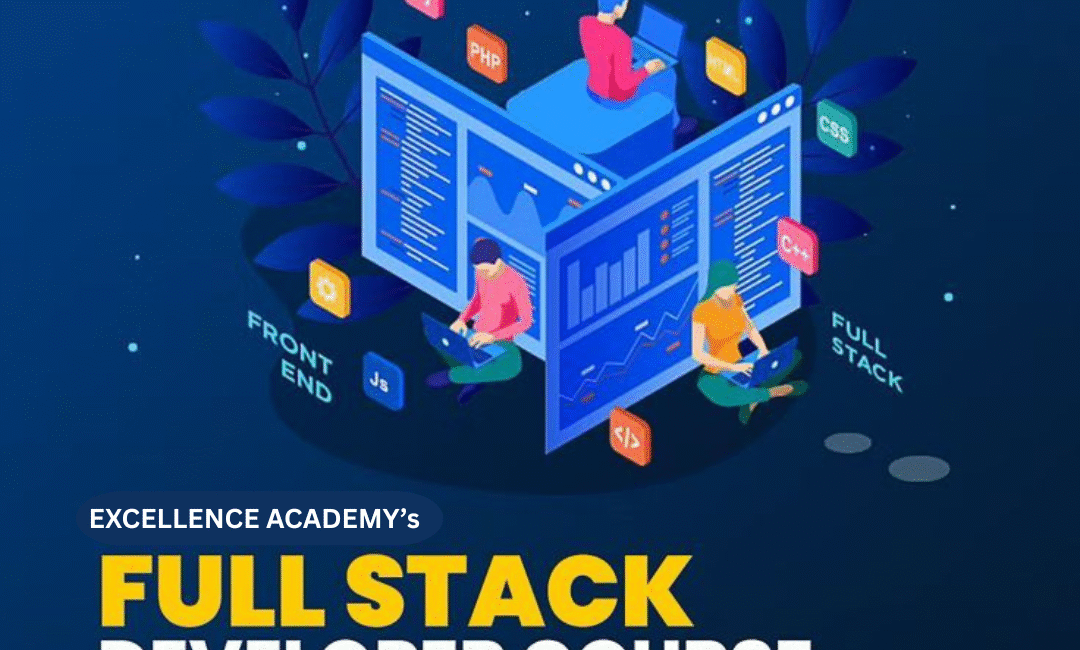
Master Full Stack Web Development for Complete Web Solutions
In today’s digital-first world, full stack web development is a highly valued skill. Whether you aim to become a professional developer or build your own web applications, understanding both the front-end and back-end is essential. This blog explores everything you need to know to get started, grow, and succeed as a full stack developer.
What is Full Stack Web Development?
Full-stack web development refers to building both the client and server sides of websites.
It involves front-end technologies like HTML, CSS, and JavaScript, as well as back-end frameworks like Node.js, Python, or PHP. Together, these tools allow developers to create dynamic and responsive web platforms from start to finish.
Why Choose a Full Stack Web Development Career?
It offers flexibility, high demand, and diverse project opportunities in various industries.
By mastering full stack development, you can work on complete systems, not just one part of the web application. This leads to better job roles, freelance gigs, and entrepreneurial ventures.
Essential Skills for Full Stack Web Developers
Learning both front-end and back-end languages is vital for full-stack development.
Front-end skills include HTML5, CSS3, JavaScript, and frameworks like React or Angular.
Back-end development requires knowledge of databases, servers, APIs, and tools like Node.js, Express, and MongoDB. Developers also need version control (like Git), problem-solving abilities, and deployment skills.
Popular Technology Stack Options to Consider
There are several stacks available based on your development goals and preferences.
- MERN Stack (MongoDB, Express.js, React, Node.js)
- MEAN Stack (MongoDB, Express.js, Angular, Node.js)
- LAMP Stack (Linux, Apache, MySQL, PHP)
Each tech stack provides a reliable combination of tools for end-to-end web development.
Learning Paths to Become a Full Stack Developer
You can choose bootcamps, online courses, or formal degrees to build your knowledge.
Platforms like freeCodeCamp, Udemy, and Coursera offer hands-on full stack projects and exercises.
Start with front-end basics, then move to back-end and databases before practicing integration.
Real-World Applications of Full Stack Web Development
From e-commerce to social networks, full stack web development powers online platforms.
It enables businesses to create scalable, maintainable, and interactive digital products.
Developers can take projects from idea to deployment without depending on multiple specialists.
Advantages of Being a Full Stack Developer
You gain control over the complete development cycle, increasing efficiency and creativity.
Employers value full stack professionals for their versatility, quick problem-solving, and cost-effectiveness.
Freelancers also benefit by offering end-to-end services to clients worldwide.
Challenges You May Face in Full Stack Web Development
Balancing front-end and back-end skills takes time, discipline, and continuous learning.
Since technology evolves rapidly, developers must stay updated and adapt frequently.
However, with consistent practice and project work, overcoming these challenges becomes easier.
How to Stay Updated in Full Stack Development
Follow tech blogs, GitHub repos, and join communities to remain current with trends.
Attend webinars, subscribe to newsletters, and engage with full stack developer forums regularly.
Also, contribute to open-source projects to enhance your visibility and expertise.
Start Your Full Stack Web Development Journey Today
The demand for full stack web development skills continues to grow across the tech industry.
Whether you’re starting fresh or upgrading your knowledge, now is the time to dive in.
With the right tools, guidance, and mindset, your full stack journey can be both rewarding and successful.
Final Thoughts:
By mastering full stack web development, you not only boost your career prospects but also gain the ability to build complete, functional, and engaging web applications. Use this knowledge to shape the digital world — one stack at a time.


